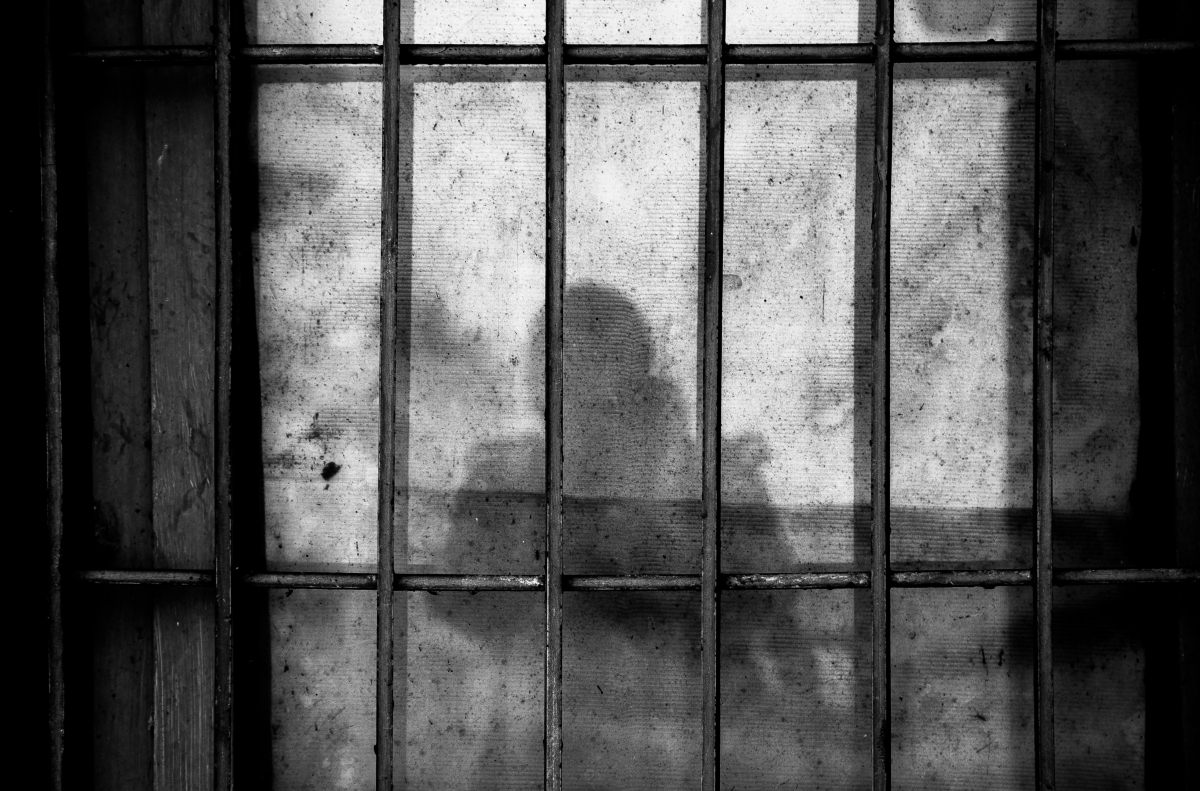Doing ill for ‘the greater good’: Understanding what really went on in the Stanford Prison Experiment
Just about every highschool and college psychology textbook offers extensive coverage of Zimbardo’s Stanford Prison Experiment (SPE). The meaning of the SPE seemed obvious — that when given roles with power, people naturally become brutal tyrants. This message has had lasting influence, not only in psychology but in the world at large. However, after researchers have recently gained access to the SPE archives, it has come to light that much of what we thought we knew about the study is inaccurate. We asked three experts to weigh in on these recent events, and the resulting discussion is one that offers valuable insights not only into the SPE but also into the role of debate in science and way that we engage with, and teach about, psychology’s classic studies.
 Photo by Ye Jinghan on Unsplash
Photo by Ye Jinghan on Unsplash
Few readers will be unfamiliar with the story of the Stanford Prison Experiment (SPE). Conducted in the summer of 1971, the study involved randomly assigning 18 college students to roles as Prisoners and Guards in a simulated prison that had been created in the basement of the Department of Psychology at Stanford University [1,2]. The researchers’ claim was that they simply stood back and watched what happened, and, in particular, that they provided no training to the Guards.
Their hypothesis was that the participants’ “behavioural scripts associated with the oppositional roles of Prisoner and Guard” — which were “the sole source of guidance” — would be sufficient for the prison to turn nasty [3]. There is little question that things did indeed turned nasty: after just six days the study had to be abandoned out of fear for the Prisoners’ welfare, such was the brutality of the Guards.
In the intervening 47 years this is a story that has been told by Zimbardo again and again, in media interviews, public lectures, and on the official website for the study. It was also a story that he retold in 2003 as he contributed to the legal defence of those who abused detainees at Abu Ghraib prison in Iraq. Here Zimbardo argued that the brutal acts that shocked the world were evidence of the power of roles to subvert perpetrators’ character and morality. He labelled this “The Lucifer Effect” — the title of his best-selling 2007 book [4] which also provided the basis for Kyle Alavarez’s eponymous film which faithfully and dramatically reenacted Zimbardo’s official version of events in the SPE [5]. This story is a staple of most of introductory psychology textbooks [6] and is retold to tens of thousands of college and high school students around the world every year [7].
In recent weeks, however, there has been another surge of interest in the SPE, rivalling any that have gone before. This time, though, the story is very different. It coincides with the digitization of material from the SPE in the Stanford University archives [8] which, for the first time, gives researchers (and anyone else who is interested) direct access to evidence from the study itself. In particular, it reveals hitherto unknown information about how Zimbardo and his colleagues conducted their research. Since the original paper was not published in a traditional peer-reviewed psychology journal, these critical methodological details have been hidden to scholars—and the public—for the past half century.
There is a wealth of such material in the archive, and researchers are now beginning to pore over it with interest. In this they have been guided by the exhaustive forensic work of the French researcher Thibault Le Texier [9], closely (and independently) followed by American journalist Ben Blum [10]. The title of Le Texier’s book — Histoire D’Un Mensonge [Story of a Lie] — gives a clear indication of his findings. Blum also uses the same word, lie, to sum up his conclusion. The bottom line for both researchers is that many of the things we thought we knew about the SPE are flatly contradicted by the newly unearthed evidence.
Perhaps the most revealing piece of evidence in the archive is an 18-minute tape recording of a meeting between Zimbardo’s prison Warden, David Jaffe, and a reluctant Guard, John Mark [11]. This recording can be accessed at https://purl.stanford.edu/wn708sg0050 (from 8:38 onwards). Before you read on, we strongly recommend that you listen to this recording with your own ears and ask yourself: Is the guard conforming blindly to his role as a brutal guard or is he being pressured by the Warden to behave this way?
 SPE Guards were said to become brutal on their own accord, but this account is being questioned. Photo by Mohamed Hassan on Pixabay
SPE Guards were said to become brutal on their own accord, but this account is being questioned. Photo by Mohamed Hassan on Pixabay
What you can hear on the tape is a Warden repeatedly cajoling the Guard to “toughen up”. He starts by saying “We noticed this morning that you weren’t really lending a hand … but we really want to get you active and involved because the Guards have to know that every Guard is going to be what we call a tough Guard”. The Guard, John Mark, repeatedly resists this pressure from the Warden over the course of the meeting. Eventually, the Warden declares: “When there’s a situation …[you have] to have to go in there and shout if necessary. To be more into the action.”
Far from being left to their own devices, it is thus clear that the Guards—or at least this one Guard—were told what they had to do, and then asked to account for themselves if they didn’t. It is not clear how many guards were exposed to pressure of this form, but it seems likely that even if only one Guard was told to behave this way, the message would have been shared among the Guards as the study progressed (noting that this was instruction directed at “every Guard”).
This evidence blows Zimbardo’s role account out of the water. For what one sees in the meeting is that the Warden characterizes the Guard not as a research participant but as a confederate who is expected to act in ways defined by the Experimenters. Unsurprisingly, perhaps, no mention was made of such meetings in Zimbardo’s 2007 book, and they are conspicuously absent from Alvarez’s movie. While an early paper did allude to the fact that the Guards thought the Experimenters were primarily interested in the Prisoners’ behaviour [1, p.75], the significance of this point was never elaborated upon, and it was then dropped from later accounts.
This type of instruction is unheard of in psychology experiments. Indeed, Experimenters are expected to take steps to ensure that their actions, even subtle ones, do not unduly influence the behaviour of participants. But in this case, the Experimenters’ influence attempts were anything but subtle. In the face ongoing and stubborn resistance from the participant they took the form of explicit, repeated instructions to engage in patterns of behaviour that supported Zimbardo’s research goals.
Almost everyone we have shared this recording with has concluded that Zimbardo’s account of the SPE actually is deeply flawed. To ensure these intuitions had some validity, we conducted a Twitter poll asking people to listen to the tape and then evaluate Zimbardo’s account. This, of course, is not a scientific test. Nevertheless, just 4% of respondents felt that what happened in the meeting between Warden Jaffe and Guard Mark was consistent with the idea that the Guards in the SPE conformed “naturally” to role (the phrase used in the original article on the study [12]). In short, then, the received story about the Stanford Prison Experiment simply does not hold up in the face of the new evidence.
Although we were surprised to find such convincing evidence (evidence that, to be frank, we would have struggled to make up), its content was not wholly surprising to us. There had always been rumours that the SPE was not all that it seemed. Amongst other things, a number of letters published in the Stanford Daily over the years had suggested that the Experimenters had been more interventionist than they admitted. Thus, in 2007 the resistant Guard, John Mark, wrote that: “My opinion, based on my observations, was that Zimbardo began with a preformed blockbuster conclusion and designed an experiment to ‘prove’ that conclusion” [13].
Even before this, in 2006, we had noted that snippets of information that were already in the public domain — such as Zimbardo’s original briefing to his Guards which forms part of his film ‘Quiet Rage’ [14] — pointed to the importance of the Experimenter’s leadership in producing the toxicity of the SPE. But such evidence was limited in quantity and quality. It was hardly enough to topple what is possibly the single most famous study in social psychology. But the news from the archive and the Jaffe-Mark tape completely transform our understanding of this classic study. Now the evidence of the Experimenters’ intervention and leadership is simply undeniable.
Where now?
Faced with this new evidence, one response has been to urge psychologists to wash their hands of the SPE. Tellingly, both Le Texier and Blum press for the study to be labelled as fraudulent and purged from classrooms and textbooks. We understand this response. Whether it will be successful is a quite different question. As Richard Griggs has noted [10], in the past, textbook authors have been reluctant to discuss the SPE’s shortcomings in favour of a simple compelling story.
But this new evidence is of a qualitatively different order. Moreover, it comes in the midst of greatly heightened concern about scientific fraud and misconduct. Certainly, it would be better to have the study expunged from the scientific record than to perpetuate a story which is strikingly inconsistent with the facts.
At the same time, we would urge against so sweeping a response. Certainly, the SPE is deeply flawed. The accounts we have been given omit crucial information, the degree of guard brutality is overemphasised, and Zimbardo’s explanation of the study is plainly untenable.
But it remains undeniable that some Guards did act in extreme ways. So we still accept Zimbardo’s claim that the SPE is a powerful demonstration of the capacity for ordinary men to be turned to evil. But this needs to be properly explained. In this respect, at the same time as it discredits the old analysis, the information that has emerged from the archive is extremely helpful.
We were always concerned with what we saw as excessive interventionism with the SPE. That is why, when two of us ran our own prison study [15] we consciously declined to tell our participants what to do. In the absence of such direction, our Guards were very unwilling to take on their role and to impose discipline. This meant that they became increasingly unable to keep the Prisoners in order and eventually the system collapsed. It was only when a leader who promised to restore law and order in the prison came to the fore and cultivated a following among new Guards that the spectre of oppression akin to that seen in the SPE surfaced.
Over time, that experience motivated us to examine the role of leadership in toxic behaviour more generally, looking both at other studies that address how ordinary people can act with inhumanity (notably Milgram’s Obedience to Authority studies [16]) and real-world examples such as the Holocaust and the Rwandan genocide [17,18]. This work culminated in a model of ‘identity leadership’ which argues that brutality occurs to the extent that leaders are able to persuade people (1) that they are part of a common group, (2) that the group’s cause is worthy, and (3) that brutal acts are necessary for the achievement of group goals [19,20].
 An abandoned corridor at the Auschwitz concentration camp. The identity leadership model can also shed light on the inhumane treatment of Jews by Nazi leaders during the Holocaust. Photo by Larah Vidotti on Pixabay
An abandoned corridor at the Auschwitz concentration camp. The identity leadership model can also shed light on the inhumane treatment of Jews by Nazi leaders during the Holocaust. Photo by Larah Vidotti on Pixabay
But although the SPE set us on the path towards an identity leadership analysis, we were unable to find clear evidence that such an analysis could explain what happened in the SPE. Until now. As we show in a paper we have just submitted for publication [21], the archives provide us with the critical evidence to complete our argument.
What we hear in Warden Jaffe’s cajoling of Guard Mark is precisely the hallmarks of identity leadership. First, the Warden repeatedly uses collective pronouns (“we”) to characterize their relationship, endeavoring to position the Experimenters and Guards as a team working toward a common goal. Second, Warden Jaffe does not tell Mark to be tough for its own sake. Rather he tries to persuade him that toughness is something necessary for the achievement of shared ingroup goals. And, third he presents that cause as one that is fundamentally noble and worthy.
In this case, the cause was much-needed improvement to the U.S. correctional system. “Hopefully what will come out of this study”, the Warden tells the Guard, “is some very serious recommendations for reform, at least reform, if not, you know, revolutionary-type reform”. “We’re not doing this because we’re sadists”, he says, we’re doing it to make the world a better place. This, then, is the very essence of identity leadership.
The end of tyranny
For the past 10 years we have sought to engage Zimbardo in debate around the above ideas. Not least, we have done so through peer-reviewed publications in leading journals that address the broad range of issues that his and our work raises — those concerning not only the origins of tyranny and resistance [22], but also the nature of leadership and followership [23,24], and the social determinants of stress and mental health [25].
These efforts have failed. Zimbardo has responded by labelling our prison study ‘reality TV’ [26], as deplorable, shameful and fraudulent [27,28], and he describes us as mere ‘bloggers’ [29]. What is fascinating here is the way that Zimbardo — responding to us and his other critics — uses the very same rhetorical techniques to try and engage the audience on his side as his Warden, Jaffe, used to try and engage Mark in the SPE. That is, he insists that his work is a moral crusade, aimed at promoting social justice. And that therefore those who threaten to derail his position need to be swatted aside for the sake of the cause.
As Zimbardo himself is unwilling to reconsider the meaning of his study, then we ask you, the reader, to listen to the evidence with your own ears and tell us what you hear. If you share our concern that his story does not fit his data, then we encourage you to change how you talk about the SPE to your students, colleagues and members of the public at large.
Correspondence regarding this piece can be addressed to Alex Haslam, School of Psychology, University of Queensland, St. Lucia QLD 4072, Australia; e-mail: a.haslam@uq.edu.au; Tel.: +61 (0)7 3346 9157
References
[1]Haney, C., Banks, C. & Zimbardo, P. (1973). A study of prisoners and guards in a simulated prison. Naval Research Reviews. September (pp.1-17). Office of Naval Research: Washington, D.C.
[2]Haney, C., Banks, C., & Zimbardo, P. G. (1973). Interpersonal dynamics in a simulated prison. International Journal of Criminology and Penology, 1, 69–97.
[3]Zimbardo, P. G. (2004). A situationist perspective on the psychology of evil: Understanding how good people are transformed into perpetrators. In A.Miller (Ed.), The social psychology of good and evil (pp.21–50).New York: Guilford. (p.39)
[4]Zimbardo, P. (2007). The Lucifer Effect: How good people turn evil.London: Random House.
[5]Alvarez, K. P. (Dir.) (2015). The Stanford Prison Experiment[Motion picture]. New York: IFC Films.
[6]Griggs, R. A. (2014). Coverage of the Stanford Prison Experiment in introductory psychology textbooks. Teaching of Psychology, 41, 195-203.
[7]Bartels, J. M., Milovich, M. M., & Moussier, S. (2016). Coverage of the Stanford prison experiment in introductory psychology courses: A survey of introductory psychology instructors. Teaching of Psychology, 43, 136-141.
[8]https://searchworks.stanford.edu/catalog?f%5Bcollection%5D%5B%5D=6022627
[9]Le Texier, T. (2018). Histoire d’un mensonge: Enquête sur l’experience de Stanford. Editions la Découverte: Paris.
[10]Blum, B. (2018). The lifespan of a lie. Medium. https://medium.com/s/trustissues/the-lifespan-of-a-lie-d869212b1f62
[11]Accessible at: http://purl.stanford.edu/wn708sg0050
[12]Haney, C., Banks, C. & Zimbardo, P. (1973). A study of prisoners and guards in a simulated prison. Naval Research Reviews. September (pp.1-17). Office of Naval Research: Washington, D.C. (p.12)
[13]See: https://alumni.stanford.edu/get/page/magazine/article/?article_id=32561
[14]Zimbardo, P. (1989).Quiet rage (video). Stanford, CA: Stanford University.
[15]Reicher, S. D., & Haslam, S. A. (2006). Rethinking the psychology of tyranny: The BBC Prison Experiment. British Journal of Social Psychology, 45, 1-40.
[16]Milgram, S. (1974). Obedience to authority: An experimental view. New York: Harper & Row.
[17]Haslam, S. A., & Reicher, S. D. (2012). Contesting the “nature” of conformity: What Milgram and Zimbardo’s studies really show. PLoS Biology, 10(11): e1001426.
[18]Reicher, S., Haslam, S. A., & Rath, R. (2008). Making a virtue of evil: A five‐step social identity model of the development of collective hate. Social and Personality Psychology Compass, 2(3), 1313-1344.
[19]Haslam, S. A., & Reicher, S. D. (2007). Beyond the banality of evil: Three dynamics of an interactionist social psychology of tyranny. Personality and Social Psychology Bulletin, 33, 615-622.
[20]Haslam, S. A., & Reicher, S. D. (2017). 50 years of “obedience to authority”: From blind obedience to engaged followership. Annual Review of Law and Social Science, 13, 59-78. e109015. doi:10.1146/annurev-lawsocsci-110316-113710
[21]Haslam, S. A., Reicher, S. D., Ranz-Schleifer, N., & Van Bavel. (2018).Rethinking the ‘nature’ of brutality: Uncovering the role of identity leadership in the Stanford Prison Experiment. Accessible at PsyArXiv Preprints: https://psyarxiv.com/b7crx
[22]Haslam, S. A., & Reicher, S. D. (2012a). When prisoners take over the prison: A social psychology of resistance. Personality and Social Psychology Review, 16, 154-179.
[23]Reicher, S. D., Haslam, S. A., & Hopkins, N. (2005). Social identity and the dynamics of leadership: Leaders and followers as collaborative agents in the transformation of social reality. Leadership Quarterly, 16, 547-568.
[24]Haslam, S. A., & Reicher, S. D. (2007). Identity entrepreneurship and the consequences of identity failure: The dynamics of leadership in the BBC Prison Study. Social Psychology Quarterly,70, 125-147. doi:10.1177/019027250707000204
[25]Haslam, S. A., & Reicher, S. D. (2006). Stressing the group: Social identity and the unfolding dynamics of responses to stress. Journal of Applied Psychology, 91, 1037-1052. doi:10.1037/0021-9010.91.5.1037
[26]See: http://www.prisonexp.org/response
[27]See: https://twitter.com/alexanderhaslam/status/1011876643927883776
[28]Zimbardo, P. (2006). On rethinking the psychology of tyranny: The BBC Prison Study. British Journal of Social Psychology, 45, 47–53.
[29]See: https://www.vox.com/science-and-health/2018/6/28/17509470/stanford-priso...



